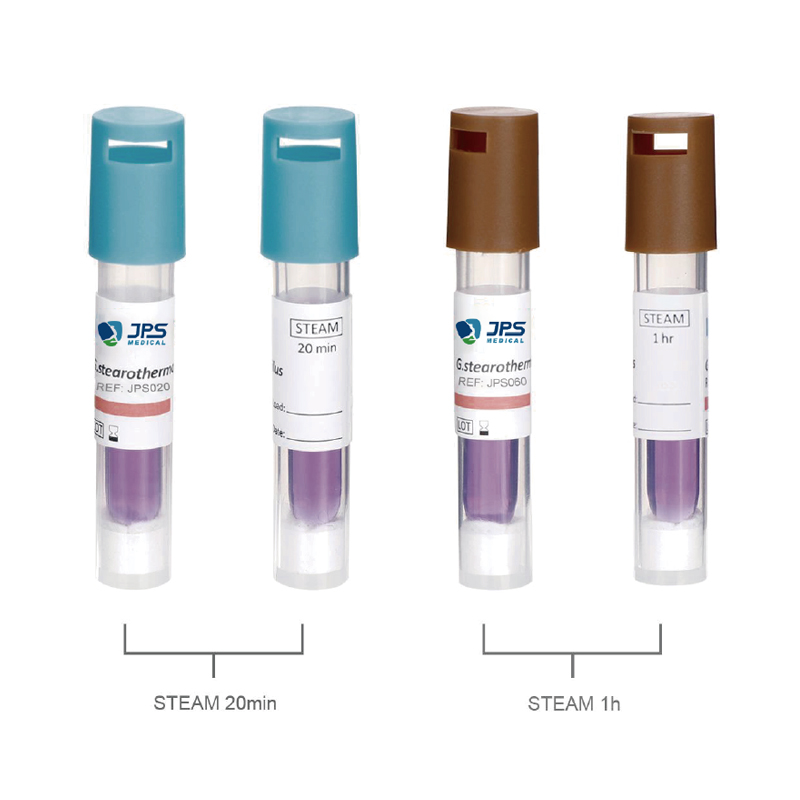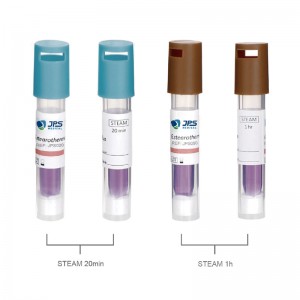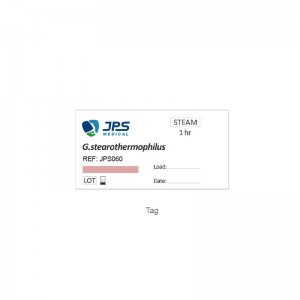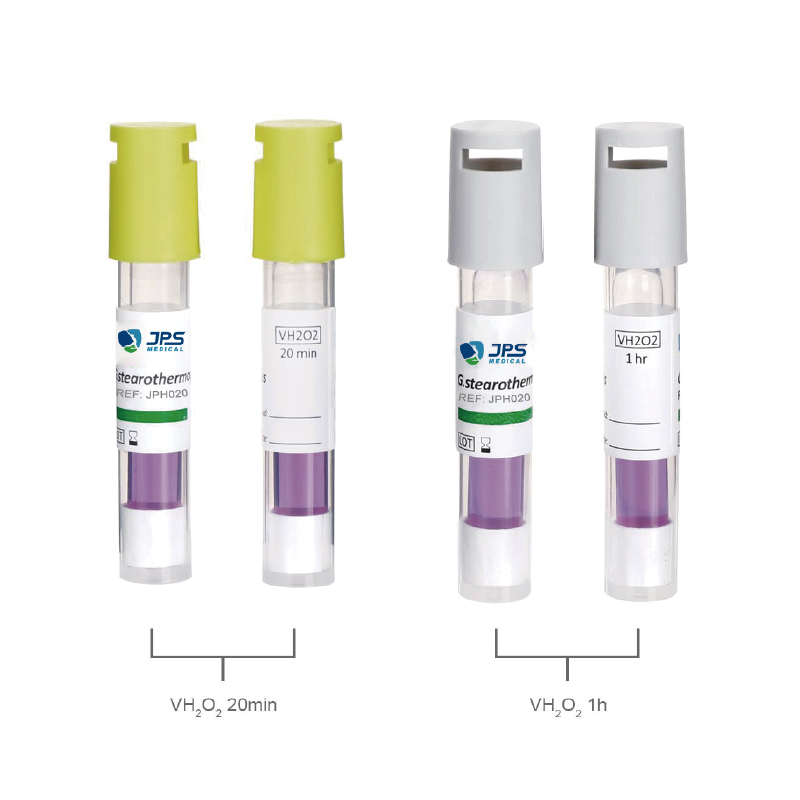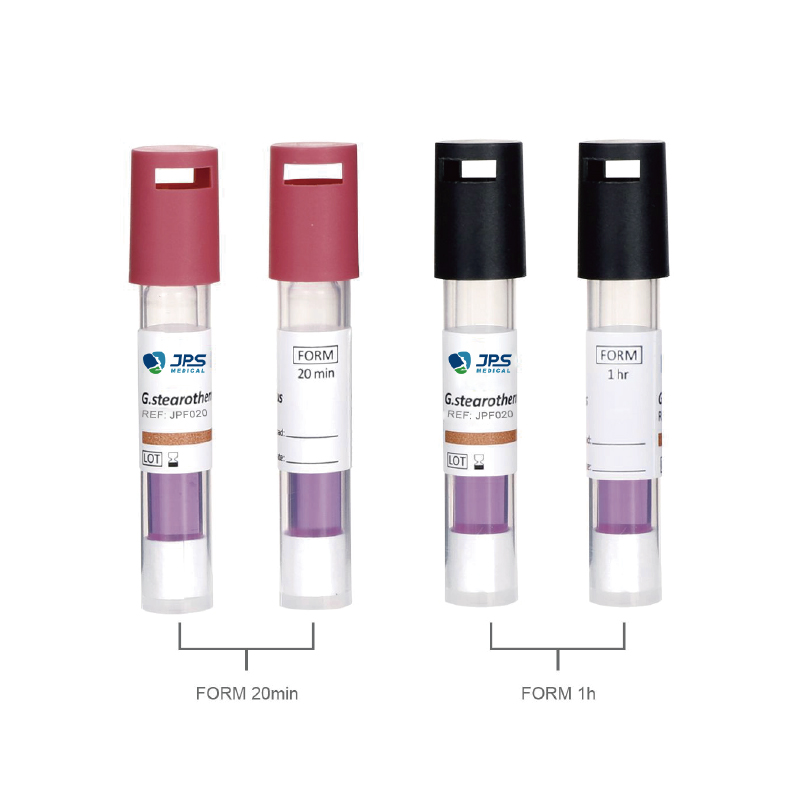Steam Sterilization Biological Indicators
| PRPDUCTS | TIME | MODEL |
| Steam Sterilization Biological Indicators (UItra Super Rapid Readout) | 20min | JPE020 |
| Steam Sterilization Biological Indicators (Super Rapid Readout) | 1hr | JPE060 |
| Steam Sterilization Biological Indicators (Rapid Readout) | 3hr | JPE180 |
| Steam Sterilization Biological Indicators | 24hr | JPE144 |
| Steam Sterilization Biological Indicators | 48hr | JPE288 |
Microorganisms:
●The BIs contain spores of heat-resistant bacteria, commonly Geobacillus stearothermophilus, known for their high resistance to steam sterilization.
●These spores are typically dried onto a carrier, such as a paper strip or glassine envelope.
Carrier:
●The spores are applied to a carrier material that is placed within a protective envelope or vial.
●The carrier allows for easy handling and consistent exposure to the sterilization conditions.
Primary Packaging:
●The BIs are encased in materials that protect the spores during handling and use but allow steam to penetrate during the sterilization cycle.
●Packaging is often designed to be permeable to steam but not to contaminants from the environment.
Placement:
●BIs are placed in locations within the sterilizer where steam penetration is expected to be the most challenging. This often includes the center of packs, dense loads, or areas furthest from the steam inlet.
●Multiple indicators may be used in different positions to verify uniform steam distribution.
Sterilization Cycle:
●The sterilizer is run through a standard cycle, typically at 121°C (250°F) for 15 minutes or at 134°C (273°F) for 3 minutes, under pressure.
●The BIs are exposed to the same conditions as the items being sterilized.
Incubation:
●After the sterilization cycle, BIs are removed and incubated to determine if any spores survived the process.
●Incubation usually occurs at a specific temperature conducive to the growth of the test organism (e.g., 55-60°C for Geobacillus stearothermophilus) for a set period, often 24-48 hours.
Reading Results:
●After incubation, the BIs are checked for signs of microbial growth. No growth indicates that the sterilization process was effective in killing the spores, while growth indicates a failure.
●Results can be indicated by a color change in the medium surrounding the spores or by turbidity, depending on the specific BI design.
Hospitals:
Used for sterilizing surgical instruments, drapes, and other medical supplies in central sterilization departments and operating rooms.
Dental Clinics:
Ideal for sterilizing dental instruments and tools, ensuring they are safely packaged and ready for use.
Veterinary Clinics:
Used to sterilize veterinary instruments and supplies, maintaining hygiene and safety in animal care.
Laboratories:
Ensures laboratory equipment and materials are sterilized and free from contaminants, crucial for accurate testing and research.
Outpatient Clinics:
Used for sterilizing instruments used in minor surgical procedures and treatments, ensuring patient safety and infection control.
Ambulatory Surgical Centers:
Provides a reliable method for sterilizing surgical instruments and supplies, supporting efficient and safe surgical procedures.
Field Clinics:
Useful in mobile and temporary medical facilities for sterilizing instruments and maintaining sterile conditions in challenging environments.
Validation and Monitoring:
●BIs provide the most direct and reliable method for validating the effectiveness of steam sterilization processes.
●They help ensure that all parts of a sterilized load have reached the conditions necessary to achieve sterility.
Regulatory Compliance:
●The use of BIs is often required by regulatory standards and guidelines (e.g., ISO 11138, ANSI/AAMI ST79) to validate and monitor sterilization processes.
●BIs are a critical component of quality assurance programs in healthcare settings, ensuring patient safety.
Quality Assurance:
●Regular use of BIs helps maintain high standards of infection control by providing ongoing verification of sterilizer performance.
●They are part of a comprehensive sterilization monitoring program that may also include chemical indicators and physical monitoring devices.
Self-Contained Biological Indicators (SCBIs):
●These include the spore carrier, growth medium, and incubation system in one unit.
●After exposure to the sterilization cycle, the SCBI can be activated and incubated directly without additional handling.
Traditional Biological Indicators:
●These typically consist of a spore strip within a glassine envelope that must be transferred to a growth medium after the sterilization cycle.
●Incubation and result interpretation require additional steps compared to SCBIs.

